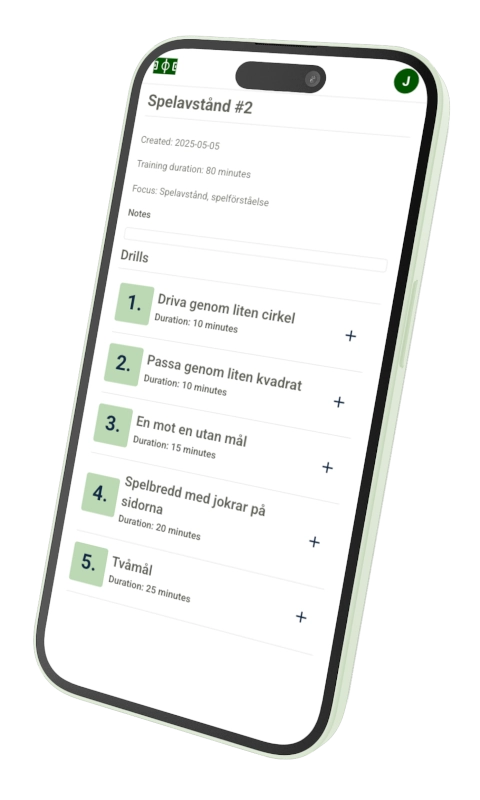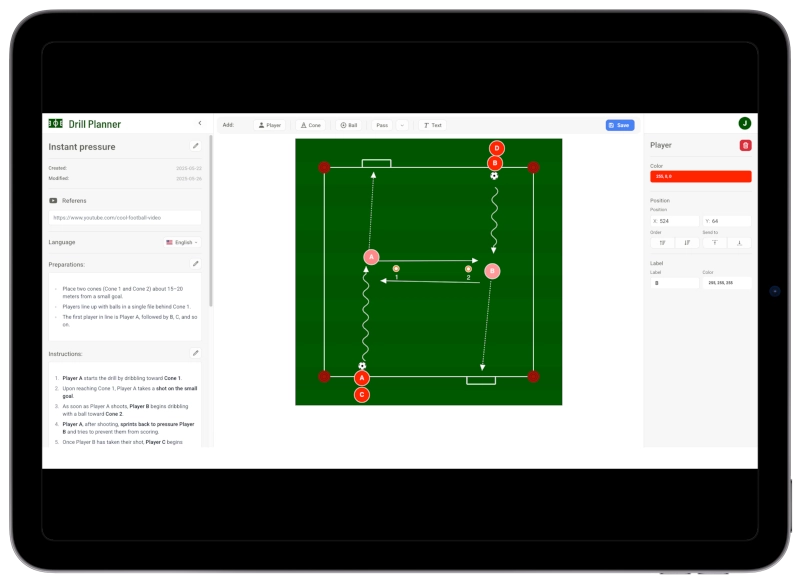
The Importance of Planning
Coaching youth soccer is incredibly fulfilling — you get to inspire, teach, and be part of young players’ growth. But it’s also demanding. Most youth coaches are volunteers, giving their time after long workdays or on weekends, juggling jobs, family, and other responsibilities.
That reality makes detailed planning tough. There’s rarely time for deep tactical analysis or long preparation sessions. Often, coaches show up at the field with just a rough idea of what they want to do — or worse, no plan at all.
This doesn’t mean they don’t care. It just means the system needs to work better for real life.
Why Lack of Planning Hurts
When sessions aren’t planned, several problems tend to arise:
- Inconsistent focus — sessions jump between random topics with no clear progression.
- Coach stress — it’s hard to improvise a good session under pressure.
- Passive assistants — co-coaches often don’t know what’s happening, so they stand by.
- Wasted time — transitions are slower, and player engagement drops.
- Slower player development — players thrive on repetition and structure. Without it, learning is slower.
As coaches, we’ve all experienced those moments of “winging it.” Sometimes it works — but more often, it doesn’t. The good news? A little planning goes a long way.

Plan Less Often — But Plan Better
The key is to plan smart, not obsessively. Here’s a proven approach that helps coaches stay on top of things without burning out:
1. Define 3–5 Focus Areas for the Season
Before the season starts, sit down with your coaching team and decide what the main objectives are. These could be technical (e.g., passing under pressure), tactical (e.g., pressing as a team), or mental (e.g., communication and leadership).
Choose just a handful — 3 to 5 is plenty for a 15–20 week season. The narrower the focus, the better the results.
2. Create 1–2 Sessions for Each Focus Area
For each focus area, prepare one or two solid training sessions. These should be simple, clear, and adaptable. Don’t try to reinvent the wheel every week — make sessions that are repeatable and tweakable.
Then, instead of switching focus every week, run the same session for 4–5 training occasions in a row. This gives players time to absorb and refine, and it gives you time to coach more deeply, not just explain drills.
With 3–5 focus areas, 1–2 sessions per area, and each session running over several weeks, you can cover an entire season with just 3 to 10 planned sessions.
3. Share the Plan

Once your plan is ready, share it openly with your fellow coaches. A shared plan creates alignment — everyone understands the season’s goals, the purpose behind each session, and what their role is on the pitch. This preparation builds confidence across the team, especially when unexpected absences happen or when rotating coaching duties. Instead of starting from scratch or relying on last-minute improvisation, every coach can step in knowing exactly what to run and why. It turns coaching into a true team effort, not a solo performance. Plus, it fosters better communication and trust within your coaching group — you’re all working from the same playbook, quite literally.
Why This Works (Really Well)
This approach might feel overly simple at first — but that’s exactly why it works. Here’s what you’ll gain:
- Clarity — players and coaches know what they’re working on.
- Consistency — repetition helps players internalize key concepts.
- Confidence — coaches arrive prepared, calm, and collaborative.
- Better sessions — more time goes into running and refining, less into improvising.
Also, let’s not underestimate the power of shared planning across coaching teams. If you’re in a club with multiple age groups, imagine if everyone used the same core ideas tailored to their level. Suddenly, mentorship, fill-in coaching, and long-term development become much easier.
What About Variety?
A common concern is that repeating sessions might bore players. But the opposite is often true. When kids know what to expect, they perform better, take more ownership, and can focus on details instead of just remembering instructions. The variety comes from how you coach — not just the drill itself.
Think of great musicians or athletes. They don’t practice new pieces every day. They refine the same ones, over and over, with purpose.
Tools Can Help
Organizing even a simple plan can feel overwhelming. That’s where Drillplanner comes in.
Drillplanner helps you:
- Build and reuse complete training sessions
- Draw drills on the pitch
- Store and organize your drill library
- Share sessions and drills with your coaching team
- Reuse drills across sessions — for example, you might use the same warm-up drill in multiple sessions
Reusing drills is a huge time-saver. You don’t need to create everything from scratch. Once you’ve created a good warm-up, passing pattern, or shooting drill, you can plug it into any session. This helps you maintain consistency while still adapting your sessions for different goals.
We built Drillplanner to support real-world coaches — the ones working late nights and early mornings, who still want to coach with clarity and intention. It’s made to be simple, collaborative, and practical.

Final Thoughts
You don’t need to plan every minute of every session. But you do need a direction — and a structure to support it. Planning ahead, even just a little, can transform the way your team trains, learns, and grows.
Plan less often, but plan smarter.
Let’s coach with purpose.